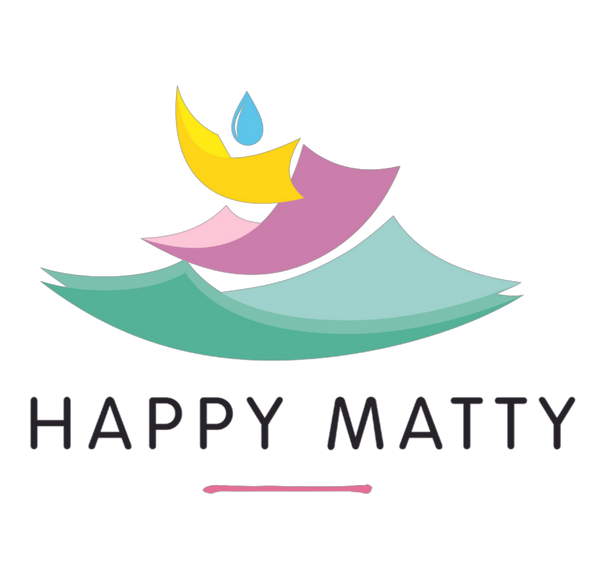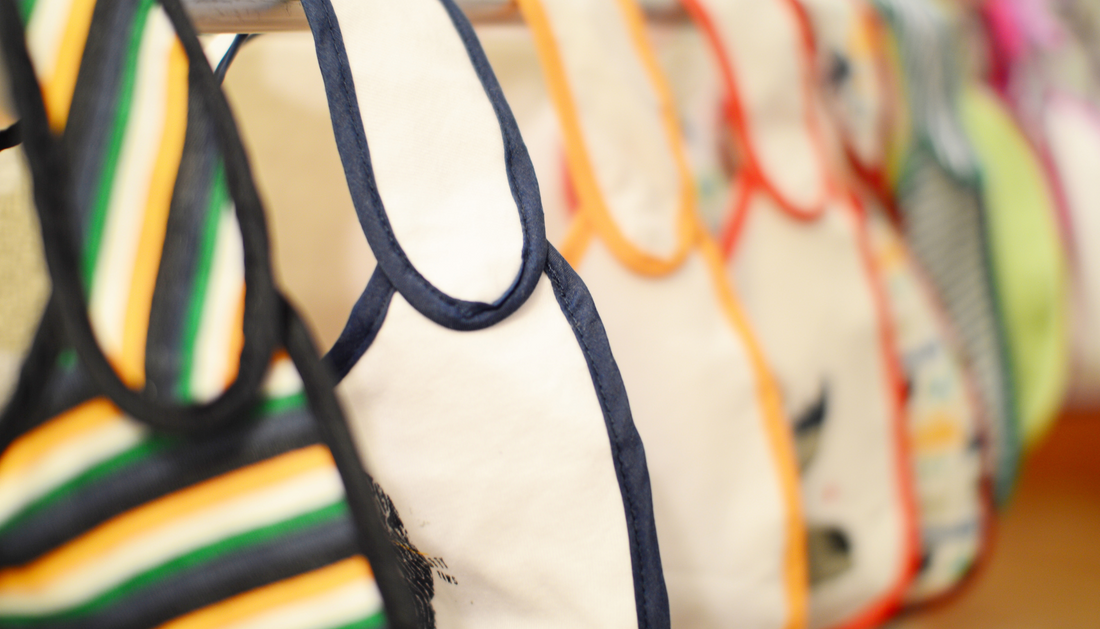Washing baby bibs might sound like a straightforward task, but as any parent will tell you, it can be surprisingly tricky. With all the stains, delicate fabrics, and the pressure of maintaining hygiene for your little one, it’s easy to make a mistake. Plus, bibs aren’t just accessories; they’re lifesavers during feeding times. From food messes to drool, they protect your baby’s clothes while also keeping their sensitive skin safe from any irritating chemicals or rough fabrics. When you use a product like those offered by Happy Matty, which is designed for comfort and practicality, the last thing you want to do is ruin it with improper washing.
While bibs may not seem as complicated to wash as other baby items, there are certain common pitfalls that many parents face. These mistakes can lead to discoloration, loss of softness, or even fabric damage. However, with a bit of knowledge and care, you can ensure your bibs stay as good as new, preserving both their functionality and their cuteness. Let’s dive into some of the most common mistakes parents make when washing bibs and how to avoid them.
Overlooking the Care Instructions
Every item of clothing—especially baby clothing—comes with care instructions, and these should never be ignored. The fabric used for bibs, whether it’s cotton, organic material, or a blend, requires special attention to preserve its softness and longevity. The first mistake many parents make is not paying attention to the care label, thinking all bibs are the same. Happy Matty bibs, for example, often come with specific guidelines on how to best care for them to ensure they maintain their softness and absorbency over time.
Most bibs will have recommended washing temperatures, drying instructions, and information on whether they should be washed with similar items. Ignoring these instructions can cause the material to lose its plushness, shrink, or even change color. So, always give that label a quick read before you throw bibs into the wash. After all, a little care can go a long way in keeping your bibs soft, fresh, and ready for use.
Using Harsh Detergents
When washing your baby’s clothing, it’s tempting to use whatever detergent you have at hand. However, many conventional detergents contain chemicals, fragrances, and dyes that could irritate your baby’s delicate skin. For bibs, especially those made from softer, more sensitive fabrics like those in Happy Matty’s collection, it’s important to avoid strong detergents. Harsh detergents can strip the fabric of its natural softness and cause discomfort when your baby wears them.
Instead, consider using a mild detergent that’s specifically designed for baby clothing. These are often hypoallergenic and free from harsh chemicals, making them gentler on sensitive skin. If you’re particularly concerned, there are natural, eco-friendly detergents available that not only protect your baby’s skin but also the environment. Always double-check your detergent choice to ensure you’re being kind to both your baby’s skin and your bib’s fabric.

Not Pre-Treating Stains
One of the most frustrating things about washing bibs is that food stains—whether from mashed peas, tomato sauce, or baby formula—can be tough to remove if not treated promptly. The mistake many parents make is throwing bibs directly into the washing machine without pre-treating these stains. While the washing machine can handle most everyday messes, stubborn food stains often require a little extra love.
Before you toss your bibs in the laundry, take a moment to pre-treat any stains. Gently dab the affected area with a baby-friendly stain remover or a natural cleaning solution. You can also use a little baking soda or vinegar to help lift the stain. Don’t rub too hard, as this can damage the fabric or push the stain deeper. Pre-treating stains before washing will ensure that the bibs come out looking fresh and clean without the need for multiple washes.
Overloading the Washing Machine
It’s tempting to load the washing machine with as much laundry as possible to save time, but this can be a costly mistake for your baby bibs. Overloading the washing machine prevents the bibs from getting a thorough clean, especially if they’re made from thick, absorbent fabrics like those found in Happy Matty products. When the machine is too full, the water and detergent can’t circulate effectively, leading to poor cleaning results.
Additionally, overcrowding the washing machine can cause friction that wears out the fabric, leading to pilling and fabric damage. To keep your bibs in top shape, try to wash them in smaller loads. This ensures each bib gets enough space to move around, allowing the detergent to do its job and keeping your bibs looking fresh.
Using Fabric Softener
It’s natural to want to make your baby’s clothing feel soft and snuggly, but fabric softener is not always the best choice for bibs, especially those designed with absorbency in mind, like Happy Matty’s bibs. Fabric softeners often leave a residue on fabric that can reduce its ability to absorb moisture effectively. Since bibs are primarily used to wipe up spills and drool, it’s essential that they retain their absorbency.
Instead of fabric softener, opt for natural alternatives like adding white vinegar to the rinse cycle. Vinegar can soften fabrics without compromising their absorbent properties. It’s a gentle, eco-friendly option that will keep your bibs both soft and functional.

Incorrect Drying Methods
How you dry your bibs after washing them is just as important as how you wash them. Many parents make the mistake of drying bibs using high heat, either by putting them in the dryer on a hot setting or drying them in direct sunlight. High heat can cause shrinkage, fade the colors, or damage the fabric, which is something you definitely want to avoid with products like Happy Matty bibs that are made with quality materials for maximum durability.
To maintain the integrity of your bibs, it’s best to air dry them whenever possible. Lay them flat on a drying rack or hang them up to dry in a well-ventilated area. If you do need to use a dryer, opt for a low heat setting to prevent unnecessary wear and tear. This simple adjustment can help preserve the softness and longevity of your bibs.
Washing with Wrong Colors
Washing your baby’s bibs with the wrong colors can lead to them getting stained or discolored. This is especially true for bibs made from delicate fabrics. If you throw your bibs into the wash along with dark-colored clothing, there’s a chance the colors could bleed, resulting in stains or discoloration. This is a common mistake many parents overlook when doing laundry.
To avoid this, always wash your bibs separately or with similar colors. Dark colors should be washed with other darks, while lighter colors should be washed with similarly light items. This keeps your bibs looking bright and ensures they retain their original color for longer.
Not Washing Bibs Enough
When your baby is drooling a lot or eating messy foods, bibs can get dirty quickly. It’s tempting to just throw them in the laundry once a week, but not washing bibs enough can lead to the accumulation of bacteria, odors, and stains. Over time, this can affect the overall hygiene of the bib and potentially irritate your baby’s skin.
Make it a habit to wash bibs frequently, ideally after every use. This helps maintain a clean, hygienic environment for your baby and ensures their clothing is always fresh and free from germs. Keeping a few extra bibs on hand will help make this easier, as you can rotate through them while others are in the wash.

Ignoring Fabric Sensitivities
Every baby’s skin is different, and what works for one may not work for another. Many parents make the mistake of assuming that all bibs are safe for sensitive skin, only to discover their little one develops a rash or irritation. The materials used in some bibs can contain harsh chemicals, dyes, or synthetic fabrics that aren’t gentle on your baby’s skin.
To avoid this issue, choose bibs that are made with soft, hypoallergenic fabrics. Happy Matty bibs, for example, are made with gentle, non-irritating materials that are perfect for babies with sensitive skin. Always opt for natural fabrics, like organic cotton, which are less likely to cause allergic reactions or skin irritations.
Not Storing Bibs Properly
After washing and drying your bibs, the final mistake many parents make is not storing them properly. Storing your bibs in a damp, cramped space can lead to mildew or unpleasant odors, especially if they aren’t completely dry. It’s also important to keep them in a clean, organized space to avoid dirt or contamination.
To ensure your bibs stay fresh and ready for use, store them in a dry, clean area, such as a dedicated drawer or a breathable cotton bag. Avoid overpacking the storage area, as this can cause the bibs to lose their shape. With the right care, your bibs will be ready to tackle any mealtime mess your little one throws their way.
Suggested Reading: Washing Bibs: Hand Wash vs. Machine Wash- Which is Better
Conclusion
Taking proper care of your baby’s bibs is more than just about cleanliness—it’s about preserving their quality, comfort, and functionality. Avoiding these common mistakes when washing bibs can make a significant difference in how they look, feel, and perform over time. By following simple tips like paying attention to care labels, using mild detergents, and washing bibs separately, you can keep them in top condition.

